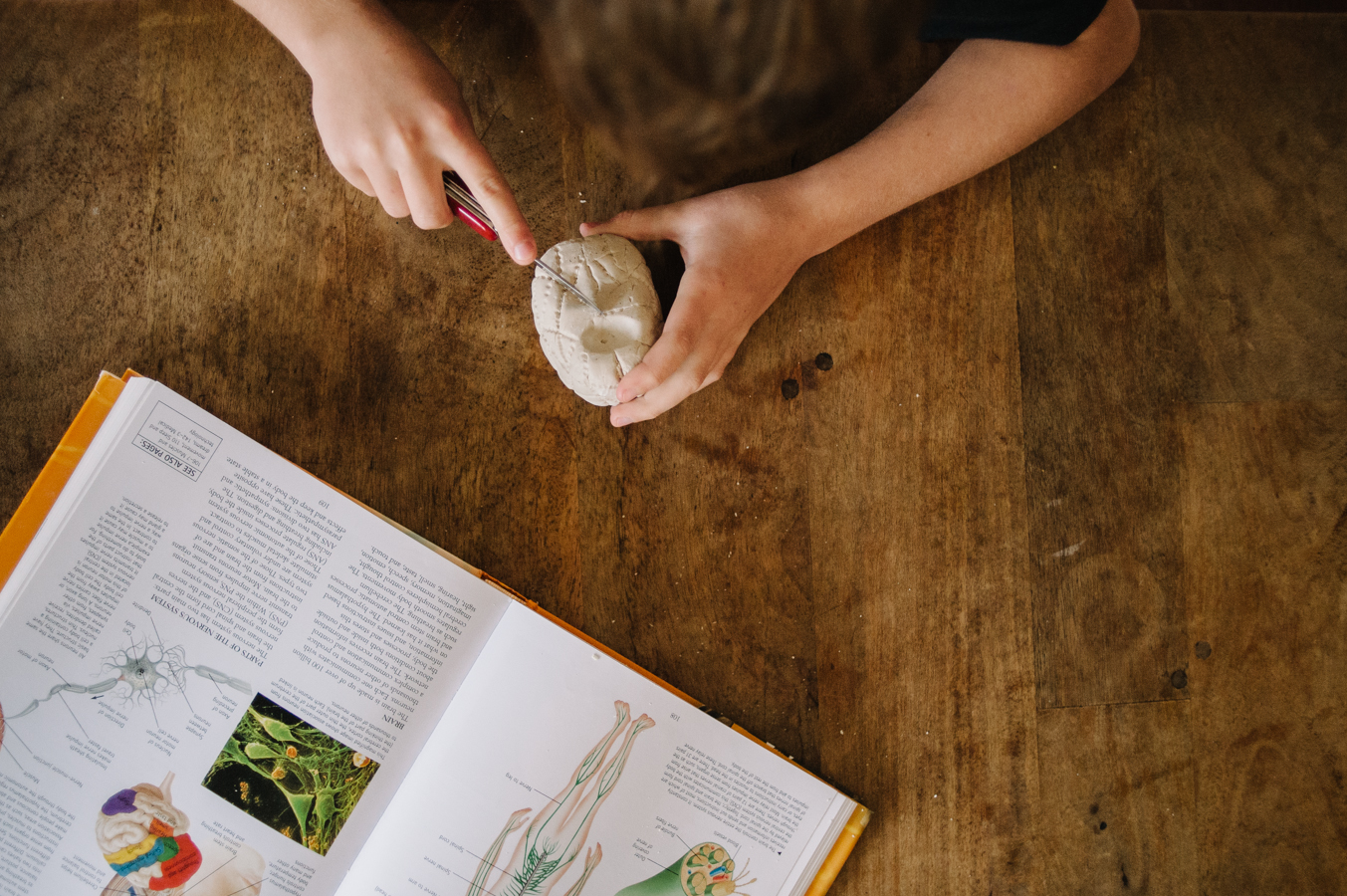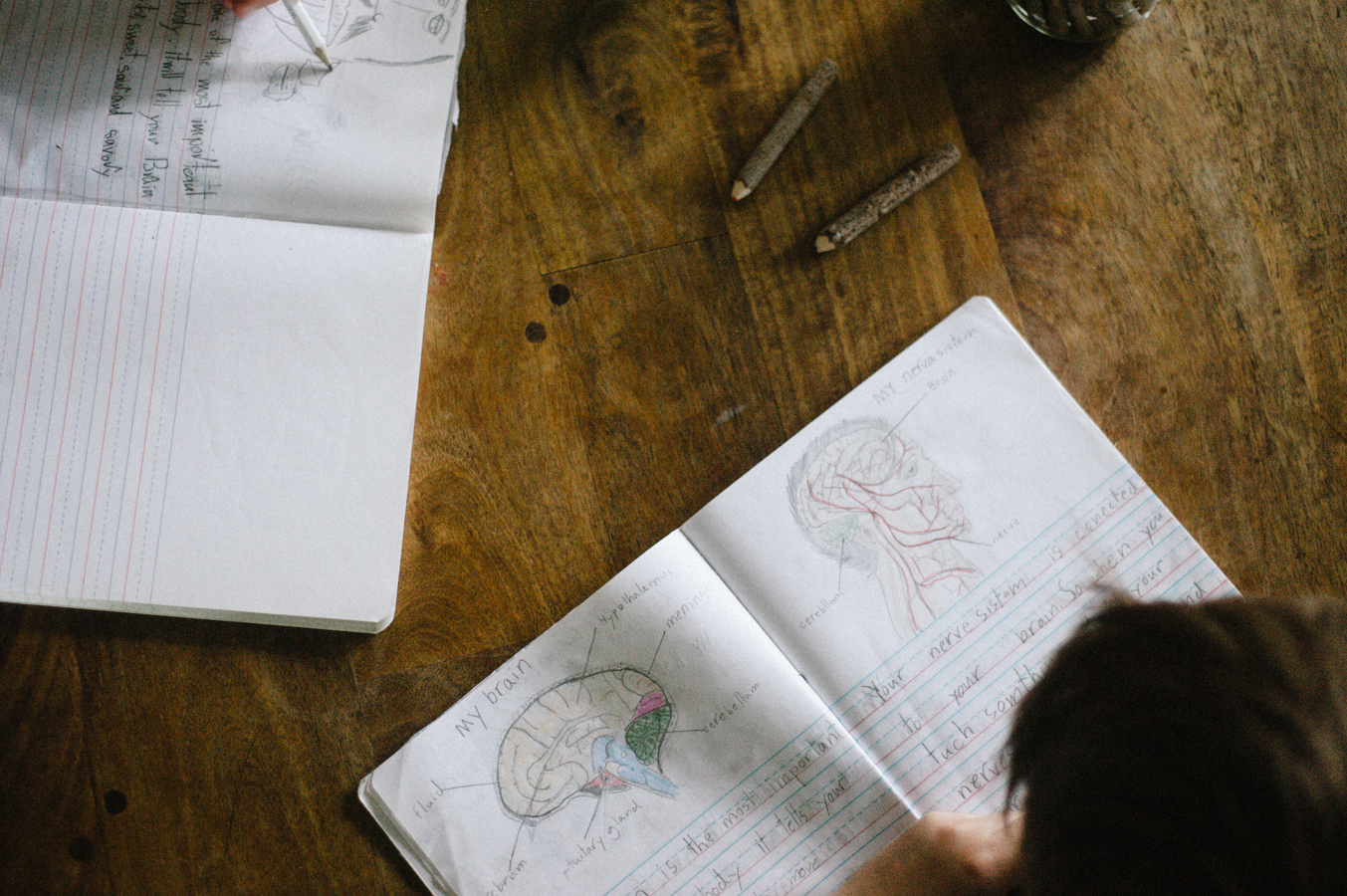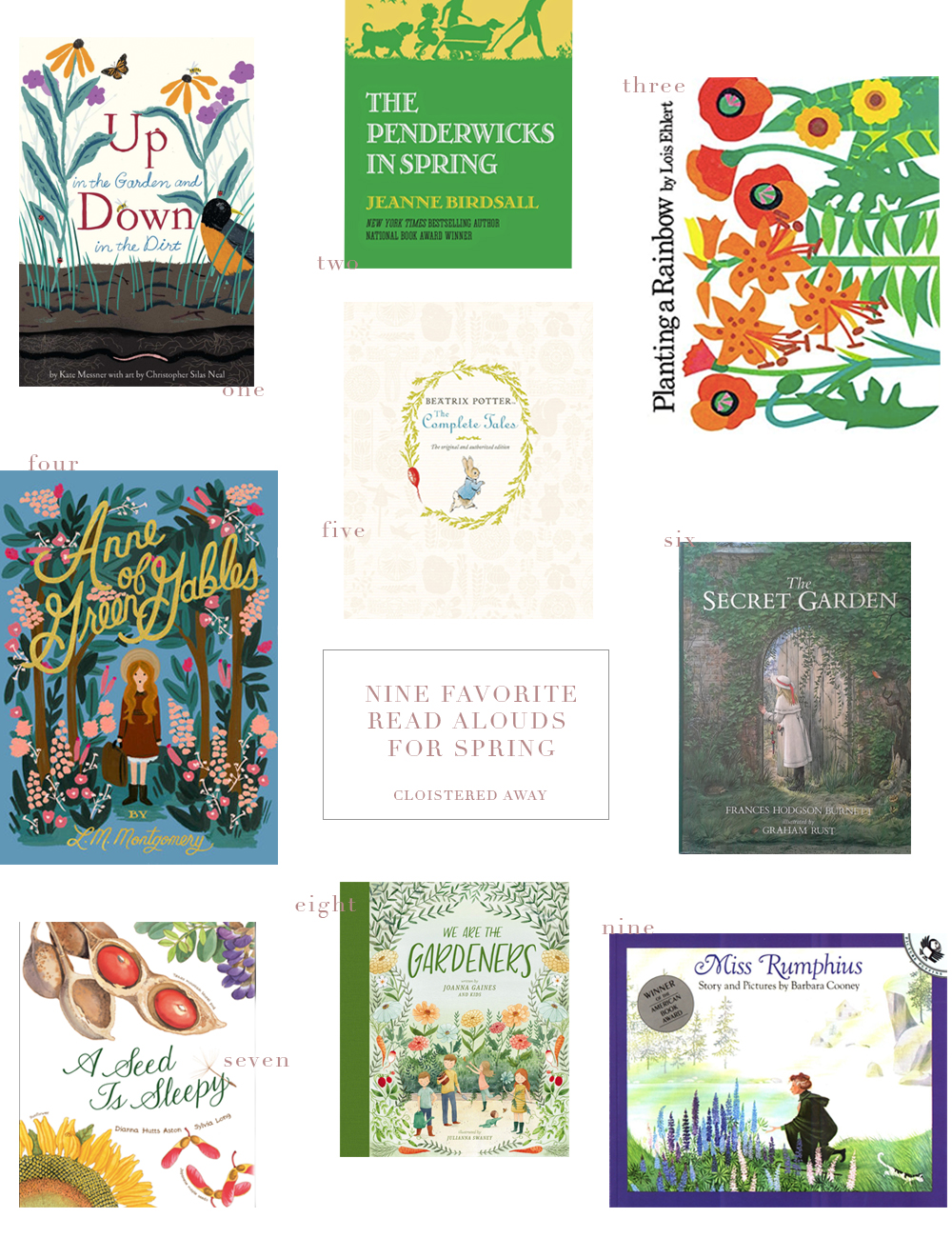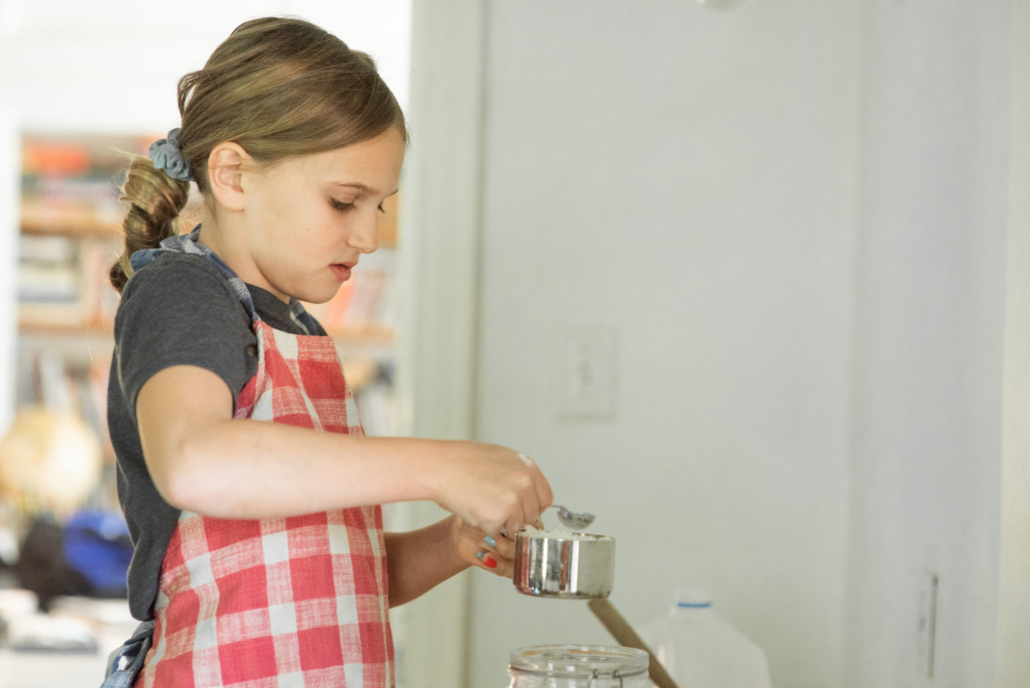
We’ve never used a formal science curriculum over here. Instead, we’ve learned more through reading about and observing the natural world. My children will tell you it is one of their favorite parts of our days. This year, we have primarily focused on anatomy, and each has created their own body book (an idea inspired by my friend Kirsten). We took a break from anatomy for much of March and April, as we spent more time preparing for our garden and working in the yard. As my children grow older, I’m more aware of how our school work ebbs and flows with our life work and seasons. I’m noticing patterns, more of which I hope to plan around better for next year–but that’s a different topic. Thus far, we have read about the circulatory, nervous, and digestive systems. As we are turning back to our books this week, we’ll aim to complete the respiratory, skeletal, muscular, reproductive, and endocrine systems. (Yikes–that’s a lot.) We’ve taken more unanticipated breaks through this study, but the nice part of homeschooling is not being in a hurry, or limited to a particular schedule, to complete a project. And so, we gather our resources and begin again.
reference books | During our study, we’ve used many books from our local library in addition to the books we own. We’ve referenced everything from science encyclopedias to early readers, adapting as we go. I’ll usually browse several books ahead of time, to choose the ones that might work the best for us. We take turns reading and usually have several books open at once for visuals. Some of our favorite references this year have been The Kingfisher Science Encyclopedia, a neatly organized and detailed reference, and The Way We Work, by David Macauley, a robust and cleverly illustrated reference. We’ve also used simple readers we’ve collected over the years at used book stores or during our library trip, such as Usborne books, Let’s Read and Find Out Science series, The Magic School Bus series, and sight word readers.
projects | When possible I try to include a few projects or experiments since, like most kids, my own children love making or playing with ideas. This year we’ve done a few projects, such as taking our pulse/heart rate, identifying our senses by using a blindfold, or crafting a brain replica with clay.

body books | This year, we’ve used the simple primary composition notebooks found in office supply stores to create our body books. The primary one is set up with partially ruled/un-ruled pages as shown. Next year, I’ll move to using the Strathmore notebooks, as they’re a little larger. Each lesson, my children sketch and color an image pertaining to the day’s reading. They then illustrate, label, and write a bit about what we’ve read together. The boys enjoy creating their own sentences, so after they’re finished, we look for spelling and grammar corrections. They record their misspelled words in their spelling notebooks, which become a part of a future spelling lesson. For the girls, I still rely on the narration/dictation/copywork model. We talk about what we’ve read. They give me a sentence or two, which I write and they copy. It’s a little advanced for Olive yet, but like most youngest children, she wants to do what everyone else is doing.
making mistakes | You’ll notice Liam still struggles with spelling, but he understands the concepts and how to create clear, concise sentences, as does my left-handed Burke who still struggles with letter reversals and capitalizing mid-sentence. In earlier years, I tended to correct them along the way, often seeing their mistakes as a reflection of my poor teaching–especially if it’s something someone else might see. I’m sharing the imperfections here so you see, no one is perfect, especially not this mother. Be patient with yourself and your children and try not to control the learning process, combing for results. I’m learning to move them forward in certain areas, while returning to basic skills in other areas over and over until they master them. That means Burke still does simple handwriting exercises and Liam is still in earlier spelling years, even though they both read voraciously far above his years. We repeat again and again, knowing it will catch one day. These mistakes are a part of life, a part of our body. They do not make any of us failures.




Comments
Hello,
I looked on Magnesium blue website for the idea of the body skeleton book . But I couldn’t find it .Could you help me ?
Many thanks.
The last paragraph was especially encouraging to me. Thank you.
This year we studied the body along with the CC sentences. On fridays we had a co-op where we did activities that pertained to the body with other families in our town that also are part of CC. Honestly, we used Pinterest a TON. I love Pinterest for finding ideas for hands on activities.
Now that my boys are a bit older (in 3rd grade) next year I hope to use notebooks/sketchbooks more to do this kind of thing. Love your blog and your inspiration!
I always appreciate your thoughts and encouragement, Danielle. Thank you. And Pinterest–yes! Big high-fives for all of the tutorials and ideas. xo